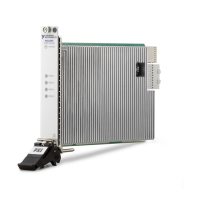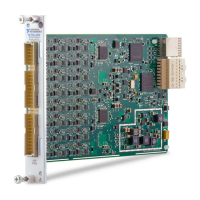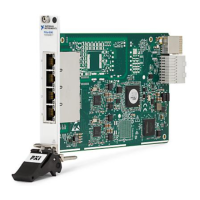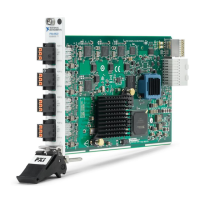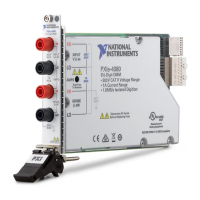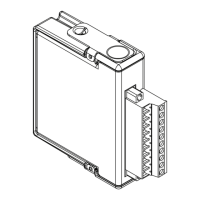© National Instruments | 3-11
NI PXI-6683 Series User Manual
I/O Considerations
Using the Ethernet Port
The NI PXI-6683 Series provides one standard RJ-45 connection for Ethernet communication.
This port auto negotiates to the best possible speed—10 Mbps, 100 Mbps, or 1000 Mbps
(auto-negotiation can be disabled by software).
The Ethernet port is auto-MDI capable, which
means crossover cabling is not necessary when connecting the NI PXI-6683 Series to another
network card. The NI PXI-6683 Series senses whether a crossed connection is needed and
performs the action internally. The Ethernet port also allows for full duplex operation, so traffic
can be sent and received at the same time.
Using Front Panel PFI Terminals as Outputs
The front panel PFI output signals use +3.3 V signaling for high-impedance loads. You can use
the PFI terminals to generate future time events and clock signals up to 1.5 MHz. PFI output
Table 3-6. Sources and Destinations for NI PXI-6683 Series Signal Routing Operations
Destinations
Front Panel
Backplane
CLKOUT PFI<0..2> PXI_
CLK10_IN
*
PXI_Star
Trigger
<0..12>
*
PXI TRIG
<0..7>
Sources
Front Panel
CLKIN
*
†
†
†
†
PFI<0..2>
‡
Backplane
PXI_ CLK10
PXI_STAR
<0..12>
*
‡
PXI TRIG<0..7>
Onboard
TCXO
†
†
†
Time-
synchronized
events and clocks
*
The NI PXI-6683H does not have a CLKIN connector, PXI_CLK10_IN, or PXI-STAR trigger lines.
†
Can be accomplished in two stages by routing source to PXI_CLK10_IN, replacing PXI_CLK10 with
PXI_CLK10_IN (occurs automatically in most chassis), and then routing PXI_CLK10 to the destination.
The source must be 10 MHz.
‡
Asynchronous routes between a single source and multiple destinations are very low skew. See
Appendix A, Specifications, for details.
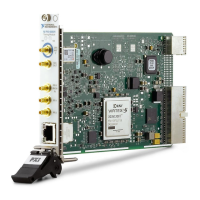
